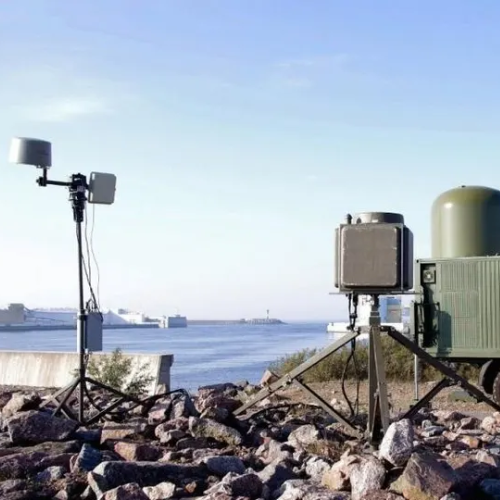On the night of February 6, an explosion shook the quiet town of Dolgoprudny, just north of Moscow. The blast wasn’t an accident—it was reportedly a calculated strike carried out by Ukrainian intelligence. The target? A sophisticated Russian anti-drone system known as the Valdai, designed to protect Moscow from unmanned aerial vehicle (UAV) attacks.
The Valdai system is among Russia’s most advanced tools for countering drones. It can detect and jam small drones up to six miles away using a combination of high-tech sensors, radar, and radio signals. This system was deployed specifically to guard Moscow’s airspace from Ukrainian drone strikes. But in a bold and risky operation, Ukrainian agents apparently traveled nearly 300 miles from the front lines in Ukraine to plant explosives and destroy it.
A video captured the nighttime explosion, spreading rapidly online. Ukrainian intelligence later claimed responsibility for the attack, saying the explosion destroyed two critical components of the Valdai radar system. The blast took place on a military base that oversees the security of Moscow’s skies, making the sabotage even more daring.
Fear in Moldova: Russian Drones Explode Near Villages
How Did They Do It?
Details of how the operation unfolded remain unclear, but the facts suggest meticulous planning and immense bravery. The Valdai system includes a vehicle and several sensors, all working together as a single unit. Somehow, the Ukrainians tracked down the system’s location in Dolgoprudny. The presence of video evidence strongly suggests that someone sneaked up to the system and planted explosives directly on it.
This operation wasn’t just a technical challenge—it was an incredible physical risk. Dolgoprudny is a densely populated area and far from the battlefront. For a Ukrainian agent to travel this deep into Russian territory and carry out a successful attack is extraordinary. While it may sound like something out of a spy movie, Ukrainian forces have conducted similar operations before. They’ve infiltrated Russian territory to sabotage warplanes, warships, and other valuable military assets.
For Ukraine, the Valdai system was a high-value target worth the risk. Despite its cutting-edge technology, the system proved vulnerable to the simplest form of attack—someone walking up to it and placing a bomb.
Why Was the Valdai Targeted?
The Valdai anti-drone system is a relatively new addition to Russia’s military arsenal. Developed in 2016 and deployed just four years ago, it’s rare and not widely used yet. It was created by the Lianozovo Electromechanical Factory in Moscow to defend against small, hard-to-detect drones that pose a growing threat in modern warfare.
Ukrainian Drones Destroy Russian Military Satellite Equipment in Bold Kursk Attack
Ukraine’s drone fleet has become increasingly powerful and innovative. Some of their drones can travel over 1,000 miles, carrying precision-guided explosives. Others can drop bombs and return to base, allowing for repeated use. These drones have been striking deep into Russia, targeting air bases, oil facilities, and military factories.
By taking out the Valdai system in Dolgoprudny, Ukraine may have cleared a path for more drone attacks on Moscow. This fits into a larger campaign of deep strikes against Russia’s critical infrastructure. Last month, Ukrainian drones hit oil facilities, reportedly reducing Russia’s petroleum output by as much as 10%.
But the Valdai’s destruction wasn’t just about drones. It was also about demonstrating Ukraine’s ability to strike fear into Russia by reaching deep into its heartland. If Russia can’t even protect its capital with its most advanced anti-drone system, it sends a strong message about the vulnerability of its defenses.
This isn’t the first time the Valdai has come under attack. In 2022, Ukrainian forces used a drone to bomb what appeared to be components of a Valdai system near the front line. The latest attack near Moscow, however, is far more significant because of the distance involved and the importance of the location.


